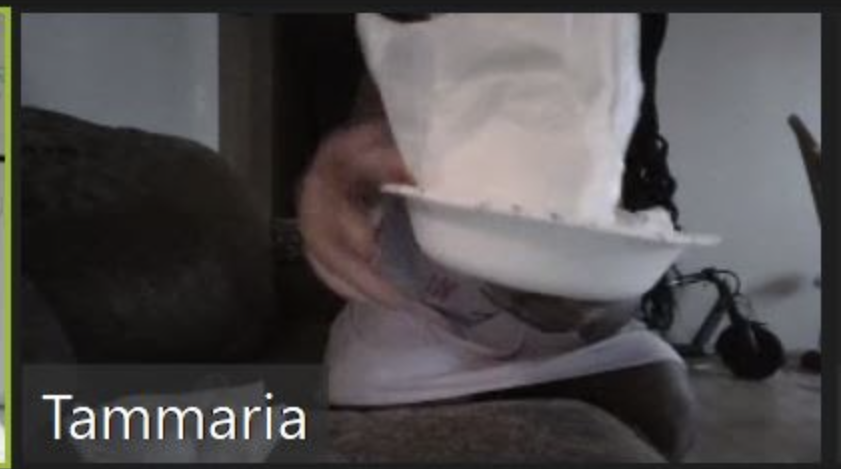Experiment leads: Demetra
Date: December 11, 2020
While SFA visits are delivered online via Zoom in the school year of 2020-2021, SFA still aims to continue to provide hands-on experiment opportunities to middle school students. Experiment kits were prepared by Demetra and distributed to SFA team members and KIPP students. Experiment supplies were delivered to KIPP teacher, Sara, one week prior to the visit and were sent to each individual student by Sara over the weekend. With the efforts from both SFA and KIPP, we are still able to conduct experiments with KIPP students while ensuring safety practices using Zoom during the pandemic. The SFA-online model also has the potential to promote STEM education outside the Twin-Cities community in the post-pandemic period as we have demonstrated the effectiveness of online visits.
Each student was given two diapers, four bowls, one plastic 100 mL beaker, a tablespoon, a spoon, a small container of salt, and a paper towel (for potential spills). All items were disposable, but the plastic beaker can be kept for future experimentation.
Polymers, a broad group of chemicals, are widely used in different types of applications but are most commonly recognized as plastic. Now, we see polymers in so many aspects of our lives, ranging from the plastic bag from the grocery store to containers for our shampoos. Outside of their durability, polymers have been designed for other purposes, including super-absorbency. With this, polymers moved into the diaper market, where the polymer, sodium polyacrylate, is responsible for absorbing large amounts of liquid due to the presence of sodium ions throughout its polymer network. Most, if not all, of us, have benefited from this invention!
To introduce these topics to the students, a short questionnaire was used to assess the student’s current understanding prior to a 5-minute presentation on polymers and super-absorbent polymers. To further understand the property of super absorbency, we sought to quantitatively and qualitatively determine the difference between the absorbency of diapers toward regular tap water and concentrated saltwater. In particular, the goal was to realize how the presence of ions in the water may affect the super absorbency of sodium polyacrylate.

With the guidance of an SFA member in small breakout rooms, students used beakers to measure the amount of water they added directly to a diaper up until it reached saturation. As water was added incrementally, students observed the growth of the diaper, indicating that it was absorbing the water. Students determined when saturation was reached, with one example being when water pooled underneath the diaper in the bowl. After determining the amount of tap water absorbed, students then created a concentrated saltwater solution for the second part of the experiment. Following the same methods for the first diaper, we began to visually observe the difference in the amount of liquid absorbed by the diaper while also noting the difference in volume needed to achieve saturation. The difference was surprisingly drastic!

After reconvening, students completed the same questionnaire from the start of the meeting in order to demonstrate their bettered understanding of polymers and absorbency. Although not all of us were able to complete the experiment in time, the students were equipped with the tools to complete it at their own time. Many shared their results and expressed their excitement for the next experiment! Overall, we found this a successful experiment, even in the online Zoom format, and we attribute our success to our amazing instructor, Sara, who engaged the students throughout our meeting and coordinated our visits and supply drop-off.